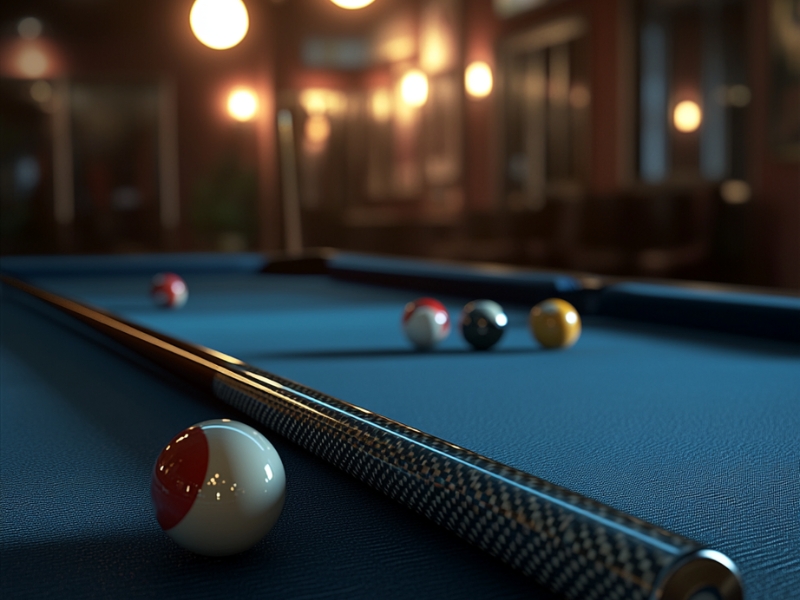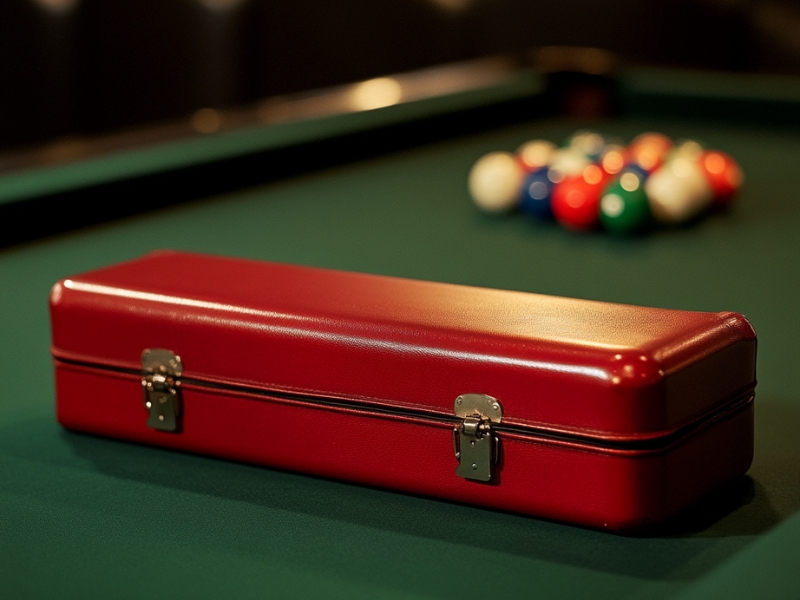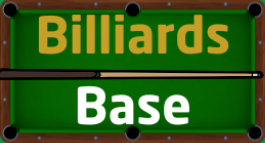If you want to preserve your pool cue’s performance and lifespan, you’ll need to regularly maintain it.
Warping, dirt buildup, and damage to the tip are just a few common problems that can occur in pool cues if proper care isn’t taken. Don’t skip out on cleaning, storage, and straightening, and your pool cue will thank you!
Why Pool Cue Maintenance Is Important
A well-maintained cue ensures consistent performance, accuracy and control. If your cue has sustained damage or has built up dirt or chalk residue, you can find your strokes are less smooth, and applying spin will be a nightmare.
Regular care of your pool cue prevents costly repairs or replacements. If you protect the cue from environmental damage, you won’t have to deal with any warping or cracking that wooden cues, even from the top pool cue brands, are susceptible to.
Cleaning Your Pool Cue

1. Cleaning the Tip
Use a damp cloth to gently remove chalk buildup off your pool cue tip after every session. Less often, you should shape the tip with either a tip tool or sandpaper to maintain its dome. Finally, you can apply a small amount of cue tip conditioner to keep the leather tip supple.
Take care when cleaning the tip of your pool cue not to over-saturate it with moisture, as this can cause damage of its own.
2. Cleaning the Shaft
Wipe the shaft with a clean, dry cloth after every game to remove any sweat or chalk buildup. If you’re looking to do a deeper clean, you can use a damp microfiber cloth with minimal water. Alternatively, apply a shaft cleaner or conditioner product that is specifically designed for pool cues.
Every so often, you might find the shaft of your pool cue becomes sticky or rough. In this case, you can sand it lightly with fine-grit sandpaper. Use a pool cue clamp for extra stability.
Just make sure to use products intended for pool cues and nothing else. Harsh chemicals can damage the wood or finish.
3. Cleaning the Butt
Use a soft cloth to polish the pool cue butt and remove any smudges from it. If your cue has a leather wrap, you should wipe with a damp cloth and occasionally condition the cue. If you’re using a linen wrap on your cue, use a dry brush to clean dirt and debris.
Storing Your Pool Cue

1. Avoid Extreme Temperatures
Avoid storing your pool cue anywhere with extreme temperatures. The cue should be kept in a climate-controlled environment and never have any prolonged exposure to heat, cold, or direct sunlight. All of these things can warp the wood of your cue, so take care.
If you have a carbon fiber cue, you can probably be a little more lackadaisical over where you store your cue, but not too much.
2. Use a Cue Case
Whenever your pool cue is not in use, store it in the best pool cue case you can buy. A decent cue case provides the best protection against physical damage and environmental exposure.
3. Proper Vertical Storage
If you have to store a cue without a case, you should place it upright with support to prevent any bending over time. Avoid leaning the cue against walls, as uneven pressure can cause warping.
How to Straighten a Pool Cue

1. Identifying a Warped Cue
You can check the shaft visually by holding it at eye level and looking along it’s length. If you’re still not convinced, roll the cue on a flat surface.
If you spot any wobbling or uneven movement while rolling your cue on a flat surface, it’s warped. A straight cue will roll smoothly without gaps between the cue and the surface.
2. Straightening Methods
There are a few methods you can take to straighten your cue. There’s manual straightening, where you gently apply pressure in the opposite direction of the warp on your cue. You’d repeat this gradually and check progress by rolling the cue or visually inspecting it.
Or you could do “Weighted Hanging”, where you hang the cue vertically with light weights attached to the warped end. Leaving it for several days, gravity should correct the warp.
If neither of those two options work or you’re just impatient, you could consult a cue repair specialist to get it fixed quickly and properly.
3. Preventing Future Warping
To prevent your cue from warping in the future, always store it properly in a protective case. Avoid leaning it against anything or exposing it to any temperature extremes.
Additional Cue Maintenance Tips
1. Inspect the Cue Regularly
Inspect your cue regularly, checking for any signs of wear on the tip, ferrule, and joint. You should also tighten any loose parts, especially in two-piece cues, as it will be impacting against cue balls, quickly loosening further if not fixed.
2. Replace Worn-Out Tips
Replace your pool cue tip if it is worn out, as it will reduce the spin and accuracy of your shot. You can learn how to replace the tip yourself, or consult a professional.
3. Maintain the Joint and Threads
Keep the joint clean and free of debris as much as possible to ensure a secure connection. You can apply a small amount of joint protectant to prevent wear, but always verify it’s clean of debris by checking after a section.
Maintaining Your Pool Cue
Maintaining your pool cue is crucial for the longevity of your cue, and requires just a few simple steps to do so. Try to incorporate these maintenance practices into your routine and you’ll find your cues lasting much longer.
FAQs About Pool Cue Maintenance
How often should I clean my pool cue?
- Wipe down your cue after every session and perform deeper cleaning once a month or as needed.”
Can a warped cue be completely straightened?
- Minor warps can often be corrected with manual methods, but severe warping may require professional repair.
What’s the best way to protect my cue during travel?
- Use a hard cue case with padding to prevent physical damage and temperature fluctuations.
